Mastering Flipping Shopify Stores for Great Profit
Summer Nguyen | 08-27-2024

Shopify has made it easy for people to start their own online stores, but there’s a smart way to make money without starting from scratch—flipping Shopify stores. Instead of building a store yourself, you can buy one that’s already up and running, improve it, and then sell it for a profit. That’s what flipping Shopify stores is all about, and it’s quickly catching on with online entrepreneurs.
Why spend time creating a store from the ground up when you can flip one and start making money sooner? Whether you’re new to online business or already have some experience, flipping stores is a quick and low-risk way to boost your income.
In this guide, we’ll walk you through each step, so you can start to flip Shopify stores and make money with confidence.
Let’s start!
What is Flipping Shopify stores?
Flipping Shopify stores is buying existing online stores , then selling them to achieve a profit.

With the growth of online shopping, learning how to buy and sell Shopify stores can be a straightforward way to achieve financial independence.
Here are some key benefits of flipping Shopify stores:
- High-profit potential: With the right strategy, you can significantly increase a store’s value and sell it for a substantial profit.
- Digital asset: Unlike physical assets, Shopify stores are digital, making them easier to manage and transfer ownership.
- Scalability: You can potentially flip multiple stores, increasing your earning potential.
- Leverage existing infrastructure: Shopify provides a robust platform, saving you time and money on building e-commerce infrastructure from scratch.
- Skill development: Flipping stores can help you develop valuable e-commerce skills like marketing, product selection, and Shopify store optimization.
- Passive income potential: Once you’ve built a successful process, you can potentially automate parts of the flipping operation, generating passive income.
You’re probably eager to know where to start and how to flip Shopify stores. Keep scrolling, and we’ll show you exactly how it’s done.
Ultimate Guide to Flip Shopify Stores
Step 1: Research to find the right Shopify store
Successfully flipping Shopify stores depends on acquiring the right business. To maximize your chances of success, carefully evaluate potential acquisition targets based on the following key factors:
-
Identify your niche: Identify a profitable niche with high demand and manageable competition by researching trends, customer preferences, and market gaps, ensuring it aligns with your expertise and interests.
-
Analyze store metrics: Analyze key metrics including sales, revenue, traffic quality, customer demographics, and product performance to gain valuable insights into the store’s performance and identify opportunities for optimization.
-
Conduct thorough due diligence: It is essential before acquiring a Shopify store. This involves examining the store’s legal and financial health and its relationships with suppliers to ensure a seamless transition.

By thoroughly evaluating these aspects, you lay a strong foundation for a successful store-flipping endeavor, ensuring that the business you acquire is positioned for growth and profitability.
Step 2: Acquire a Shopify store
Once you’ve identified a promising Shopify store based on thorough research and analysis, the next step is to acquire the business through negotiation, securing funding, and completing the ownership transfer.
-
Negotiation: Have straightforward and honest discussion with the store owner for a final price that makes both of you satisfied. Consider factors such as the store’s revenue, profit margins, customer base, and market potential when determining a fair value.
- Securing funding: To finalize the purchase, secure the necessary funds. Explore various financing options such as loans, investor partnerships, or personal savings.
- Completing the transaction: Once the purchase price and funding are secured, finalize the transaction by transferring store ownership. This involves executing legal paperwork, transferring the domain name, gaining access to the Shopify admin panel, and ensuring a smooth transition of customer data, product information, and order history.
Acquiring the right store through careful negotiation and securing proper funding sets you on the path to success, allowing you to take control and begin optimizing the business seamlessly.
Step 3: Optimize the acquired Shopify store
After acquiring the Shopify store, the next step is to enhance it for improved performance and increased profitability. This involves a comprehensive audit and targeted improvements across several key areas:
-
Audit the store: Analyze the store’s strengths, weaknesses, opportunities, and risks ( SWOT). This process will help you pinpoint areas that need improvement and uncover growth opportunities.
-
Product optimization: Review and refine the product selection, pricing strategies, and product descriptions. It will be better if your offerings are competitively priced, well-presented, and aligned with market demand.
-
Design and user experience (UX): Improve the store’s visual appeal and navigation to make it more engaging and easy to use. A well-organized, user-friendly store not only boosts customer satisfaction but also increases conversion rates.
If you want to improve your Shopify store’s appearance, consider using our completely free Mageplaza Instagram Feed app.
Mageplaza Instagram Feed for Shopify
Engage visitors, build trust, and customize effortlessly. Streamline tasks and boost interaction.
Check it out!
- Search engine optimization (SEO): Upgrade listing details and site content to boost SEO performance. This involves conducting keyword research, optimizing meta tags, and producing high-quality, relevant content to drive organic traffic.
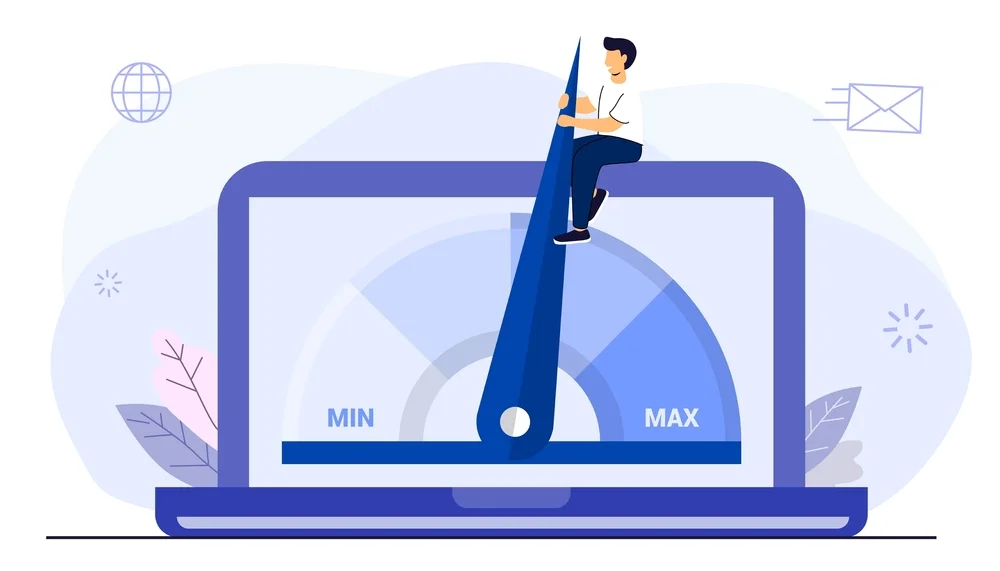
Effective optimization not only improves the store’s performance and profitability but also makes it more attractive to potential buyers, setting it up for long-term success.
Step 4: Scale the business
With the store optimized, the next crucial focus is on growth and scaling. What you have to do is focus on maximizing profits and developing sustainable value.
-
Customer acquisition: Implement targeted marketing campaigns to drive increased traffic to the store. Utilize a mix of digital advertising, social media marketing, content creation, and influencer partnerships to attract a wider audience.
-
Conversion optimization: Optimize the checkout process to boost the shopping experience and reduce cart abandonment. Streamline the steps to purchase, offer multiple payment options, and ensure the site is mobile-friendly to boost conversion rates.
-
Customer retention: Foster customer loyalty by providing exceptional service and introducing rewards programs. Engage customers through personalized email campaigns, exclusive offers, and excellent after-sales support to encourage repeat purchases.
-
Sales growth: Keep track of and review sales performance frequently to spot new growth opportunities. Use data-driven insights to refine product offerings, expand into new markets, and implement dynamic pricing strategies to maximize revenue.

By focusing on growth and scaling, you can fully leverage the Shopify store’s potential, driving increased revenue and building a business that is both profitable and attractive to buyers.
Step 5: Prepare for sale
To achieve a seamless and successful sale of your Shopify store, focus on these critical preparation tasks:
-
Determine the store’s value: Begin by assessing key factors such as revenue, profit margins, and industry multiples to establish a fair and competitive price for your store.
-
Collect essential documentation: Including financial statements, traffic reports, inventory lists, and supplier contracts, to ensure transparency and facilitate the sale.
-
Choose an appropriate marketplace: Choose an ideal platform for listing your store. Consider reputable marketplaces like that specialize in connecting sellers with potential buyers interested in e-commerce businesses.
-
Create an attractive listing: Develop a compelling listing that highlights the store’s strengths, such as its financial performance, growth potential, and unique features, to capture the attention of prospective buyers.
-
Advertise the listing effectively: Market your listing across several channels, such as social media, email campaigns , industry forums, and targeted advertisements. Reach out to potential buyers who are looking to purchase a successful Shopify store within your niche.
Careful planning and following these steps will greatly improve your chances of selling your Shopify store smoothly and for a good price. A well-organized store and strong marketing will draw in serious buyers and help you complete the sale successfully.
Step 6: Sell the store
The final step in the Shopify store flipping process involves executing the sale and transferring ownership. This requires careful management of buyer interactions and transaction details:
-
Screening Buyers: Evaluate potential buyers to ensure they are serious and financially capable. Conduct interviews or discussions to assess their interest, experience, and ability to complete the purchase.
-
Negotiate: Enter into negotiations with the interested buyer to finalize the sale price and terms. Discuss details such as payment methods, post-sale support, and any contingencies to reach a mutually agreeable arrangement.
-
Close the Deal: Complete the transaction by signing all required legal documents. Ensure that all contractual agreements are clear and executed, and confirm that payment is received according to the agreed terms.
-
Transfer Ownership: Complete the transfer of ownership by moving control of the Shopify store to the buyer. This includes transferring the domain, Shopify account, and any related assets. Provide the buyer with the necessary training and support to ensure a smooth transition.
A smooth and professional handover ensures the deal goes well and benefits both the seller and the buyer.
Tips For Better Flipping Strategies
Boosting Store Value
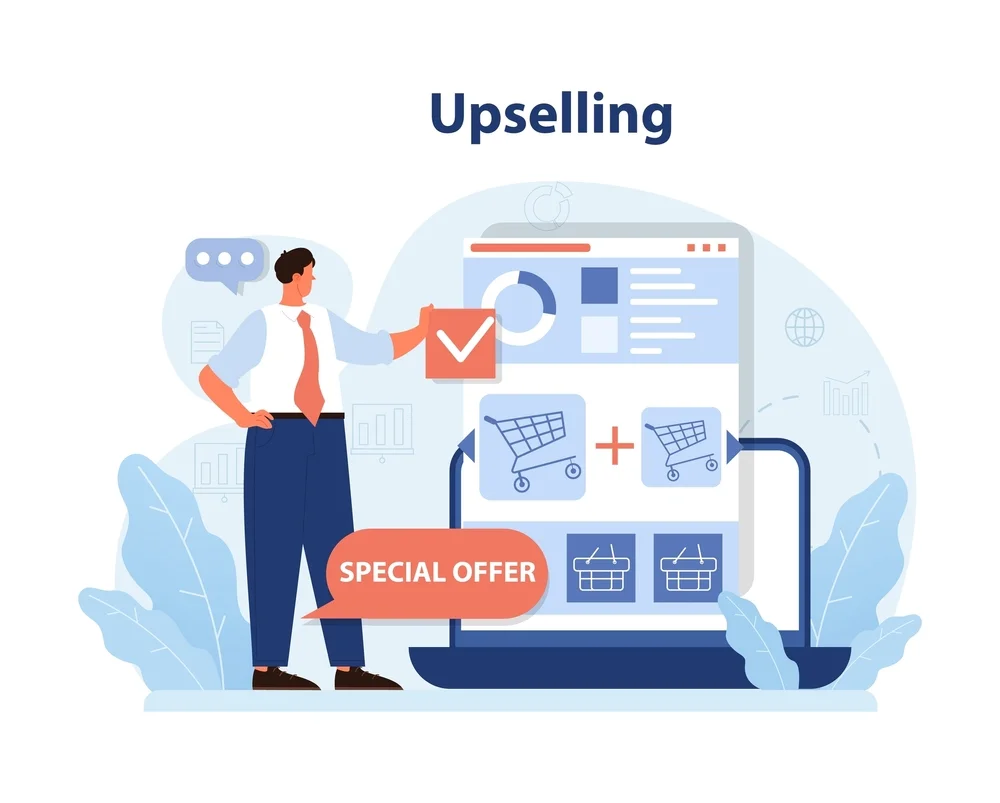
To increase the value of your Shopify store and maximize profits when it’s time to sell, it’s essential to implement strategies that drive sales and improve customer engagement. Here are a few key approaches you can focus on:
- Focus on Sales Growth: Expand your product selection and improve marketing strategies.
- Use Customer Data: Analyze what customers like to create personalized offers.
- Create Urgency: Use limited-time deals and special discounts to encourage faster purchases.
- Regularly Review Sales: Continuously modify your strategies in response to sales data.
- Increase Store Value: As sales improve, the store becomes more attractive and profitable for resale.
By fine-tuning these methods, you can boost sales and increase the store’s overall value. Don’t know how to start? Explore our expert tips for driving revenue on Shopify.
Optimizing timing

Knowing the right time to sell your Shopify store can make a big difference in your profits. Take note of these important considerations:
- Evaluate Store Performance: If your store has strong sales and a loyal customer base, selling sooner might be profitable. If it shows promise for future growth, holding onto it a bit longer could increase its value.
- Match Market Conditions: Look at current market trends and investor interest to choose the best time to sell.
- Consider Personal Goals: Think about your financial needs, how much time you can spend, and the risk of market saturation.
- Watch Market Trends: Keep an eye on seasonal changes, economic factors, and what competitors are doing to find the best times to buy and sell.
Leveraging Shopify apps and integrations
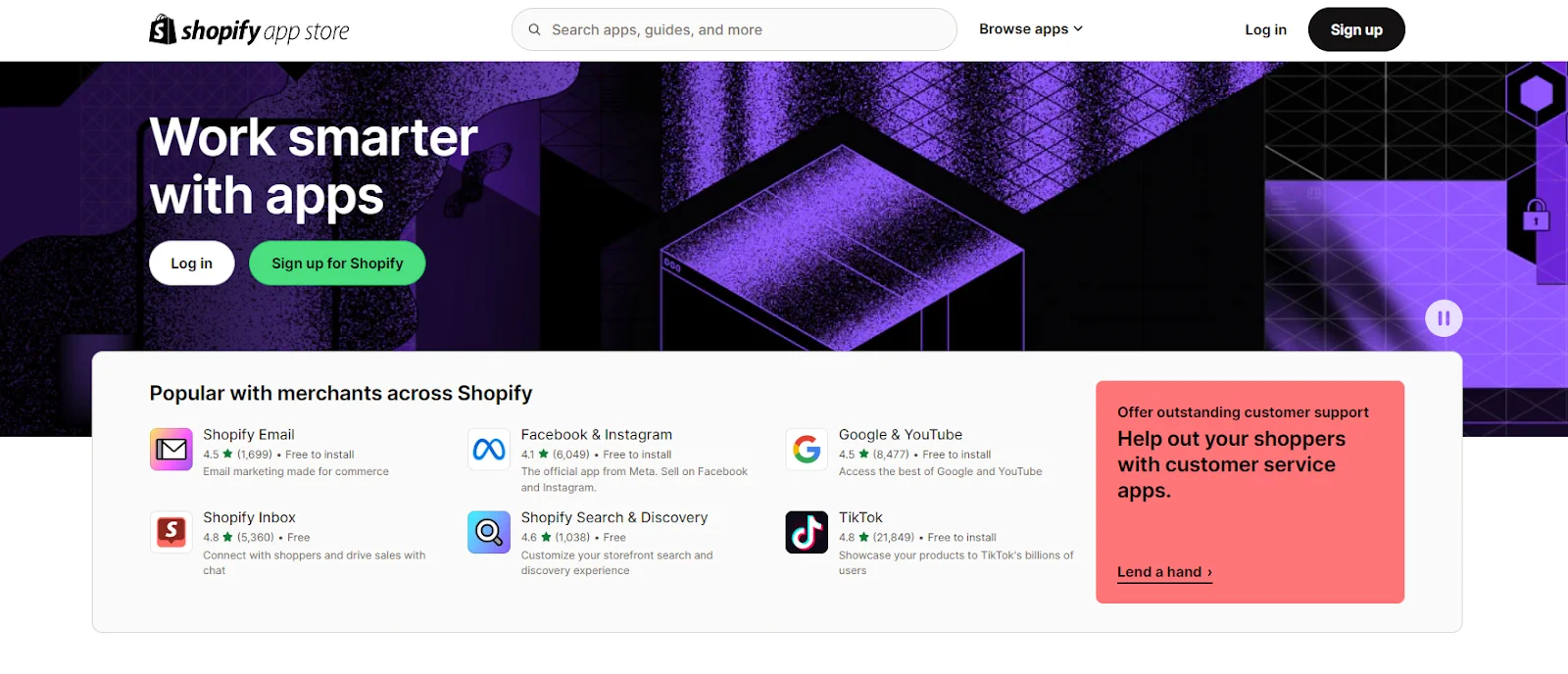
To maximize the value and profitability of a flipped Shopify store, integrating the right apps and tools is essential. These apps provide a variety of features that can significantly enhance store performance, from SEO optimization and inventory management to support services and automated marketing.
Through careful selection and deployment of the appropriate integrations, store owners can optimize performance, increase sales, and ultimately boost the store’s overall value, making it an attractive asset for potential buyers.
Shopify Speed & Performance Optimization Services
We'll help you achieve lightning-fast page load times, reduce bounce rates, and improve the overall user experience for your customers.
Learn moreExecuting marketing strategies

Effective marketing is essential for attracting buyers to your flipped Shopify store. Here’s how to make it work:
- Tell a Great Brand Story: Share a story about your brand that connects with your audience and highlights what makes your store special.
- Use Different Channels: Promote your store through social media, email, influencer collaborations , and content strategies .
- Offer Special Deals: Use discounts or limited-time offers to encourage people to buy quickly.
- Track and Adjust: Regularly check metrics like website traffic, how well you convert visitors into buyers, and your return on investment to improve your marketing efforts.
By keeping track of these things, you can make sure your store is as profitable as possible.
Building a positive reputation
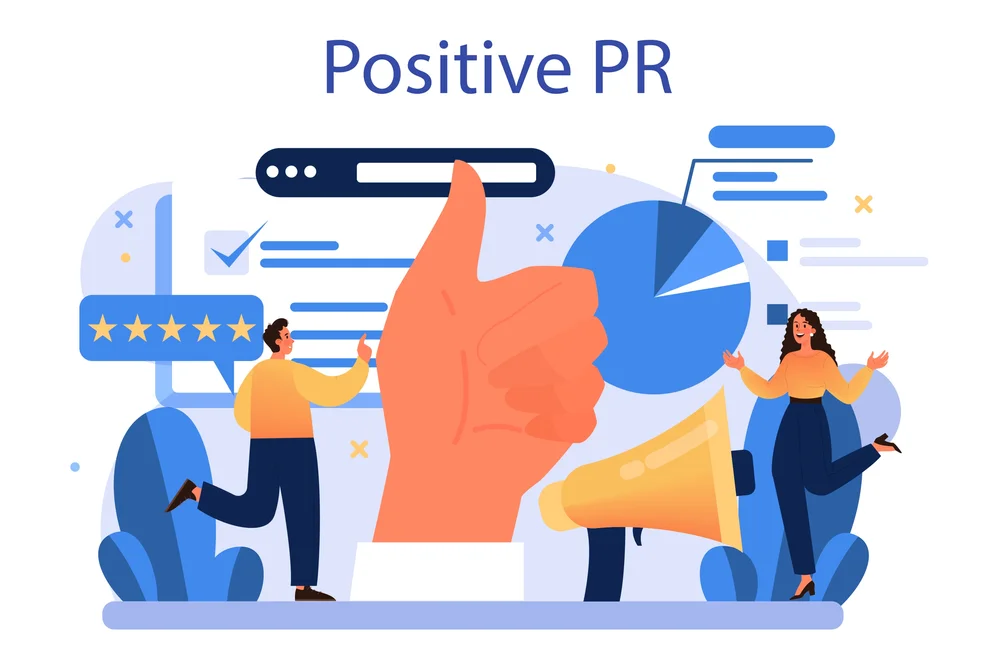
Creating a strong reputation for your Shopify flipping business begins with ensuring each store you flip is top-notch. Here’s how to do it:
- Ensure Quality: Make sure the store’s products, user experience, and operations are all high quality.
- Be Transparent: Clearly share information about the store’s performance and any issues with potential buyers.
- Engage with the Community: Actively participate in e-commerce discussions, social media platforms, and events to strengthen your credibility.
- Deliver Consistently: Provide high-quality stores and maintain good communication to build trust, encourage repeat business, and get referrals.
By following these steps, you’ll strengthen your reputation and stand out in the market.
Find markets for your Shopify store
There are some special platforms that are designed for selling entire e-commerce businesses, not just individual products. They simplify the process and connect sellers of digital assets—like websites and apps—with potential buyers.
Flippa
Flippa is a widely used site to buy and sell websites, online businesses, and domains. While it’s not exclusively for Shopify stores, it’s a viable option for selling yours. However, unlike dedicated Shopify marketplaces, Flippa requires you to handle the Shopify account transfer independently.

Despite this, Flippa offers valuable resources like a valuation tool, legal support, and even brokers to assist with the sale. Keep in mind that listing and selling on Flippa comes with fees, which can range from a few hundred dollars to more depending on additional services.
Acquire.com
Acquire offers a streamlined process for listing, discovering, and negotiating the sale of e-commerce enterprises. Sellers can showcase their stores with detailed metrics and performance data, while buyers can explore various opportunities and connect with potential sellers.

Acquire provides tools for valuation, due diligence, and secure transactions, making it an efficient and transparent choice for those looking to acquire or sell an online business.
Empire Flippers
Empire Flippers is a well-regarded marketplace for buying and selling online businesses, including Shopify stores. The platform simplifies the transaction process by vetting listings and providing detailed business evaluations, which help both buyers and sellers make informed decisions.
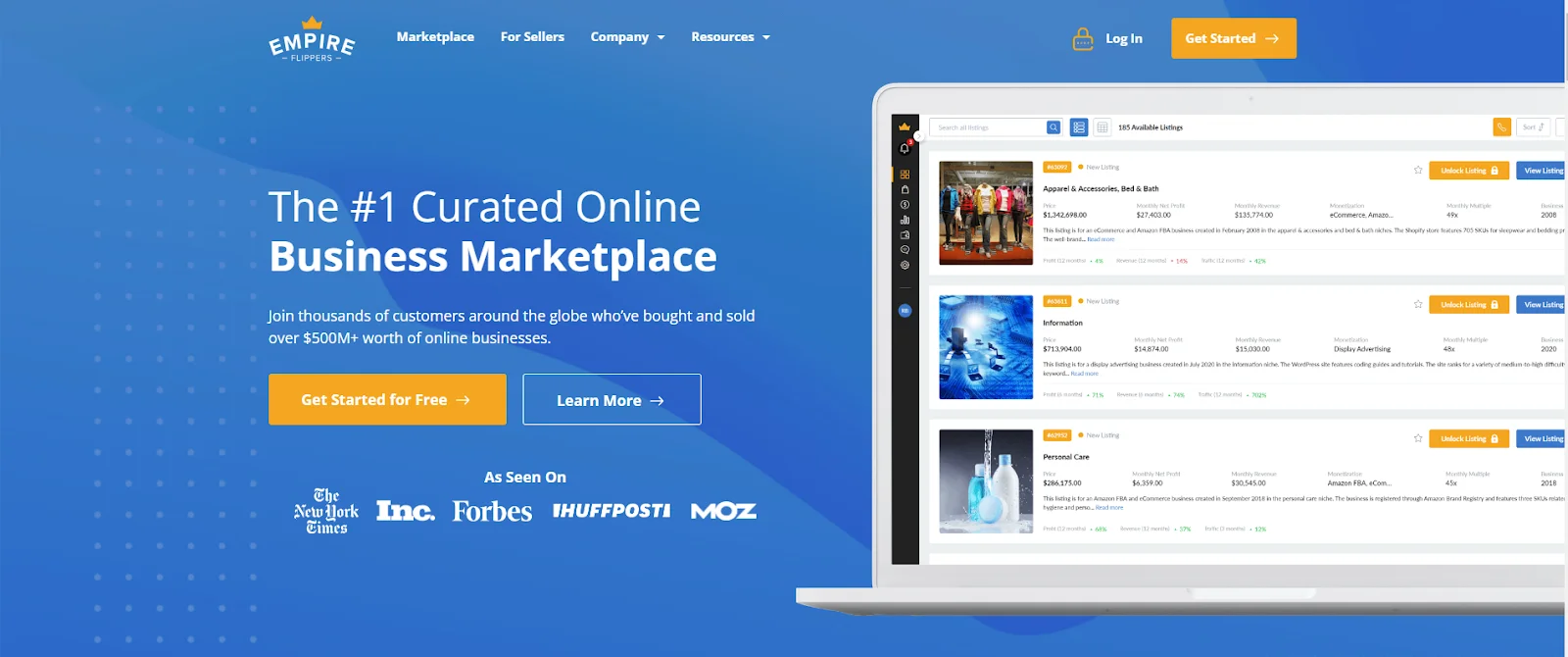
They specialize in helping well-established, high-earning businesses sell for top dollar. They carefully check out anyone who wants to sell their business. If you have a successful, long-running company and want experts to help you get the best price, this might be a good choice.
FAQs
1. How much money do I need to start flipping Shopify stores?
The amount of money you need to start flipping Shopify stores varies greatly depending on several factors:
- Store price: The cost of purchasing a Shopify store can range from a few thousand to several tens of thousands of dollars.
- Inventory: If the store requires inventory, you’ll need additional capital to purchase stock.
- Marketing budget: Setting aside money for marketing and advertising is essential for drawing in customers and boosting sales.
- Operating expenses: Consider costs such as Shopify subscription fees, app costs, and potential staffing expenses.
- Emergency fund: It’s smart to maintain a reserve for unforeseen expenses or challenges.
While it’s possible to start with a relatively small amount of capital, having a larger budget generally increases your chances of success. You can initiate with a minor investment and progressively scale up as you gain experience and profitability.
2. How long does it take to flip a Shopify store?
The time it takes to flip a store can fluctuate depending on aspects like the scale of changes, store size, budget, and market conditions. Simple updates might take a few months, while major renovations or strategic actions could take 6 to 12 months or more.
3. What are the common challenges when flipping Shopify stores?
Finding the right store can be time-consuming, and accurately valuing it is difficult due to factors like traffic and profit margins. Optimizing a store requires expertise in marketing, design, and SEO while timing the sale is tricky due to market fluctuations. The growing competition in the market makes it harder to stand out, and there are financial risks if the store underperforms.
Conclusion
Flipping Shopify stores can be a profitable business if you have the right strategy and understanding. By carefully selecting and optimizing stores, staying informed on market trends, and employing effective marketing techniques, you can maximize your chances of success.
However, it’s essential to be aware of the challenges, including competition, valuation complexities, and market timing. With diligence, creativity, and a solid understanding of the e-commerce landscape, flipping Shopify stores can become a profitable part of your financial strategy.








